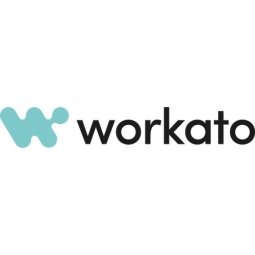公司规模
Mid-size Company
地区
- America
国家
- United States
产品
- Workato
- Microsoft AX
- Salesforce
技术栈
- ERP
- CRM
- Automation
实施规模
- Enterprise-wide Deployment
影响指标
- Digital Expertise
- Productivity Improvements
- Revenue Growth
技术
- 应用基础设施与中间件 - API 集成与管理
- 平台即服务 (PaaS) - 连接平台
适用行业
- 药品
适用功能
- 商业运营
- 销售与市场营销
用例
- 过程控制与优化
- 远程资产管理
服务
- 软件设计与工程服务
- 系统集成
关于客户
Alcami is a US-based contract development, testing, and manufacturing organization that serves the pharmaceutical and biotech industries. With its headquarters in Durham, North Carolina, Alcami employs around 1000 people and specializes in providing comprehensive services that include pharma manufacturing, development, and testing. As a contract development and manufacturing organization (CDMO), Alcami handles a significant number of contracts at any given time, which vary in value and complexity. The company is tasked with managing these contracts efficiently to ensure smooth operations and maximize revenue. Alcami's operations are supported by two major systems: an ERP system (Microsoft AX) and a CRM system (Salesforce), which are crucial for tracking contract values and business performance. Despite its robust infrastructure, Alcami faced challenges in reconciling contract data across these systems, which impacted its ability to make informed business decisions and optimize its sales strategy.
挑战
As a contract development and manufacturing organization (CDMO), Alcami deals with a lot of contracts. At any given time, these contracts vary in value—there is the initial awarded contract value, the amount “in process,” or the percentage of work that Alcami has scheduled to complete, and the invoiced value, or the total value of all completed work that can now be counted as revenue. These varying contract values are stored across two different systems: an ERP (Microsoft AX) and a CRM (Salesforce). In order to calculate the time between an awarded contract, a scheduled contract, or an invoiced contract, Alcami had no other option but to check between the two systems. Manually cross-referencing 1000+ contracts at any given time was slow and ineffective. Of the many different types of services that Alcami provides, the team could only analyze a small subset of their contracts. This left the team in the dark when trying to answer key questions like “What type of service contract are we completing the fastest?” or “How should we orient our sales strategy to maximize revenue?” There was a clear loss of clarity in revenue and business operations—Alcami needed a better solution.
解决方案
Alcami knew exactly what needed to be done—connect its ERP and CRM. They just needed the right technology for the job. A quick Workato demo showed the team exactly how a recipe could be used to link the two platforms and, with this “seemingly out-of-the-box solution,” Alcami was sold. Now, Workato provides insights while Alcami employees sleep. Every night, a Workato recipe delivers an update as to how much of the contract opportunity has been invoiced vs. how much of it has been planned in the ERP through various networks—in other words, Workato delivers an overall revenue recognition cycle. Thanks to Workato’s nightly updates, Alcami now has the clarity to accurately evaluate its service performance. At any given moment, Alcami now knows exactly how much time has passed between an awarded contract and a scheduled or invoiced contract, whereas before it could only analyze a small percentage of these contracts. Understanding how quickly work can be executed has given Alcami a better understanding of how its resources should be allocated and has served as the foundation for a new market strategy in approaching contracting for certain services. Plus, since deploying Workato for revenue recognition, Alcami has expanded its use of automation by consolidating sales ops information for their lab testing side of the business within its CRM. As Alcami grows, the eventual vision is to bring in Workato into all aspects of the business.
运营影响
数量效益

Case Study missing?
Start adding your own!
Register with your work email and create a new case study profile for your business.
相关案例.

Case Study
Case Study: Pfizer
Pfizer’s high-performance computing software and systems for worldwide research and development support large-scale data analysis, research projects, clinical analytics, and modeling. Pfizer’s computing services are used across the spectrum of research and development efforts, from the deep biological understanding of disease to the design of safe, efficacious therapeutic agents.

Case Study
Fusion Middleware Integration on Cloud for Pharma Major
Customer wanted a real-time, seamless, cloud based integration between the existing on premise and cloud based application using SOA technology on Oracle Fusion Middleware Platform, a Contingent Worker Solution to collect, track, manage and report information for on-boarding, maintenance and off-boarding of contingent workers using a streamlined and Integrated business process, and streamlining of integration to the back-end systems and multiple SaaS applications.

Case Study
Process Control System Support
In many automated production facilities, changes are made to SIMATIC PCS 7 projects on a daily basis, with individual processes often optimised by multiple workers due to shift changes. Documentation is key here, as this keeps workers informed about why a change was made. Furthermore, SIMATIC PCS 7 installations are generally used in locations where documentation is required for audits and certification. The ability to track changes between two software projects is not only an invaluable aid during shift changes, but also when searching for errors or optimising a PCS 7 installation. Every change made to the system is labour-intensive and time-consuming. Moreover, there is also the risk that errors may occur. If a change is saved in the project, then the old version is lost unless a backup copy was created in advance. If no backup was created, it will no longer be possible to return to the previous state if and when programming errors occur. Each backup denotes a version used by the SIMATIC PCS 7 system to operate an installation. To correctly interpret a version, information is required on WHO changed WHAT, WHERE, WHEN and WHY: - Who created the version/who is responsible for the version? - Who released the version? - What was changed in the version i.e. in which block or module of the SIMATIC PCS 7 installation were the changes made? - When was the version created? Is this the latest version or is there a more recent version? - Why were the changes made to the version? If they are part of a regular maintenance cycle, then is the aim to fix an error or to improve production processes? - Is this particular version also the version currently being used in production? The fact that SIMATIC PCS 7 projects use extremely large quantities of data complicates the situation even further, and it can take a long time to load and save information as a result. Without a sustainable strategy for operating a SIMATIC PCS 7 installation, searching for the right software version can become extremely time-consuming and the installation may run inefficiently as a result.

Case Study
ELI LILLY ADOPTS MICROMEDIA’S ALERT NOTIFICATION SYSTEM
Pharmaceutical production is subject to a strict set of enforced rules that must be adhered to and compliance to these standards is critically necessary. Due to the efforts of WIN 911’s strategic partner Micromedia, Lilly was able to adopt an alarm notification infrastructure that integrated smoothly with their existing workflows and emergency hardware and protocols. These raw energy sources enable the industrial process to function: electricity, WIN-911 Software | 4020 South Industrial Drive, Suite 120 | Austin, TX 78744 USA industrial steam, iced water, air mixtures of varying quality. Refrigeration towers, boilers and wastewater are monitored by ALERT. Eli Lilly identified 15000 potential variables, but limitations compelled them to chisel the variable list down to 300. This allowed all major alarms to be covered including pressure, discharge, quantity of waste water discharged,temperature, carbon dioxide content, oxygen & sulphur content, and the water’s pH.









